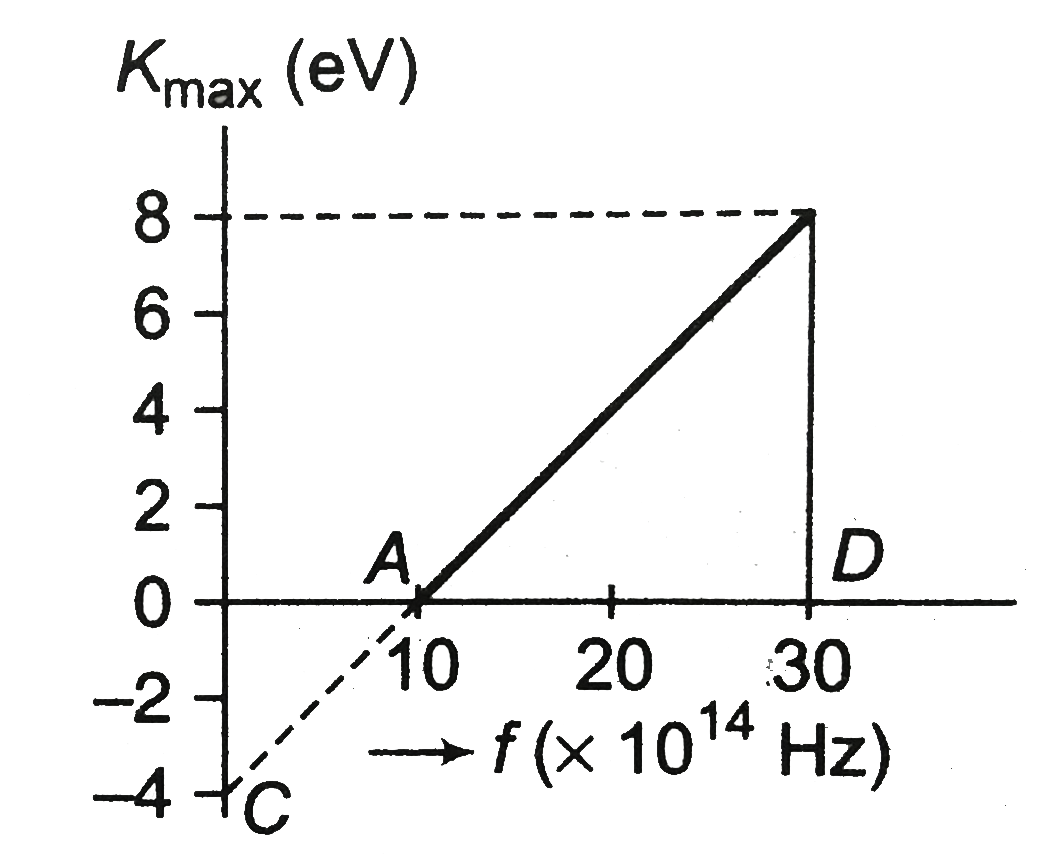Level 1 Subjective from DC PANDEY ENGLISH Chapter 16 MODERN PHYSICS - 1 for Class 12
| Class 12 | PHYSICS |
| Chapter | MODERN PHYSICS - 1 |
| DC PANDEY ENGLISH | Level 1 Subjective |
| Medium | English |
| Academic Year | 2023-2024 |
Question 7
(a) A proton is moving at a speed much less than the speed of light. It has kinetic energy K1 and momentum p1. If the momentum of the proton is doubled, so p2=2p1, how is its new kinetic energy K2 related to K−1?
(b)A photon with energy E1 has momentum p1 . if another photon has momentum p2 that is twice p1, how is the energy E2 of the second photon related to E1?View SolutionQuestion 8
A parellel beam of monochromatic light of wavelength 500 nm is incident normally on a perfectly absorbing surface. The power through any cross section of the beam is 10 W. Find
(a) the number of photons absorbed per second by the surface and
(b) the force exerted by the light beam on the surface.View SolutionQuestion 18
Hydrogen atom is its ground state is excited by means of monochromatic radiation of wavelength 1023Å. How many different lines are possible in the resulting spectrum? Calculate the longes wavelength among them. You may assume the ionization energy of hydrogen atom as 13.6 eV. View SolutionQuestion 21
A hydrogen like atom (described by the Bohr model) is observed ot emit ten wavelengths, originating from all possible transition between a group of levels. These levels have energies between - 0.85 eV and -0.544 eV (including both these values). (a) Find the atomic number of the atom.
(b) Calculate the smallest wavelength emitted in these transitions. (Take ground state energy of hydrogen atom =- 13.6 eV)View SolutionQuestion 22
The energy levels of a hypothetical one electron atom are shown in the figure. (a)Find the ionization potential of this atom.
(b) Find the short wavelength limit of the series terminating at n=2
(c ) Find the excitaion potential for the state n=3.
(d) find wave number of the photon emitted for the transiton n=3 to n=1 ∝__________0eV
n=5____________−0.80eV
n=4 ______________ -1.45 eV<br>n=3____________−3.08eV
n=2_______________ -5.30 eV<br>n=1 ____________________ -15.6 eV.View SolutionQuestion 23
(a) An atom initally in an energy level with E = - 6.52 eV absorbs a photon that has wavelength 860 nm. What is the internal energy of the atom after it absorbs the photon?
(b) An atom initially in anergy level with E =-2.68 ev emits a photon that has wavelength 420 nm. What is the internal energy of the atom after it emits the photon?View SolutionQuestion 25
A small particle of mass m move in such a way the potential energy (U=12m2ω2r2) when a is a constant and r is the distance of the particle from the origin Assuming Bohr's model of quantization of angular momentum and circular orbits , show that radius of the nth allowed orbit is proportional to inView SolutionQuestion 27
x-rays are produced in an X-ray tube by electrons accelerated through an electric potential difference fo 50.0 kV. An electron makes three collisions in the target coming to rest and loses half its remaining kinetic energy in each of the first two collisions. Determine the wavelength of the resulting photons. (Neglecting the recoil of the heavy target atoms).View SolutionQuestion 32
The electric current in an X-ray tube (from the target to the filament) operating at 40kVis 10mA. Assume that on an average, 1% of the total kinetic energy of the electrons hitting the target are converted into X-rays (a) what is the total power emitted as X-rays and (b) how much heat is produced in the target every second?View SolutionQuestion 35
A metallic surface is irradiated with monochromatic light of variable wavelength. Above a wavelength of 5000Å no photoelectrons are emitted from the surface. With an unknown wavelength, stopping potential fo 3V is neceddsry ot eliminate the photocurrent. Find the unknown wavelenght. View SolutionQuestion 37
A metallic surface is illuminated alternatively with light of wavelenghts 3000Å and 6000Å. It is observed that the maximum speeds of the photoelectrons under these illuminations are in the ratio 3 : 1 . Calculate the work function of the metal and the maximum speed of the photoelectrons in two cases.View SolutionQuestion 38
Light of wavelength 180 nm ejects photoelectrons from a plate of metal whose work - function is 2 eV. If a uniform magnetic field of 5×10−5 T be applied parllel to the palte, what would be the radius of the path followed by electrons ejected normally from the plate with maximum energy.View Solution
All Exercises from DC PANDEY ENGLISH Class 12 PHYSICS MODERN PHYSICS - 1
- Example
- Example Type 1
- Example Type 2
- Example Type 3
- Example Type 4
- Exercise 33.1
- Exercise 33.2
- Exercise 33.3
- Exercise 33.4
- Level -1 Assertion And Reason
- Level 1 Objective
- Level 1 Subjective
- Level 2 Comprehension Based
- Level 2 More Than One Correct
- Level 2 Passage 3
- Level 2 Passage 4
- Level 2 Single Correct
- Level 2 Subjective
- Level 2Passage 2
- Miscellaneous Examples
